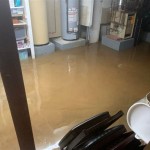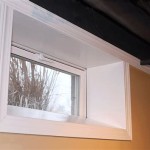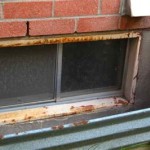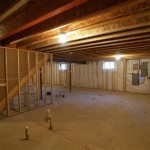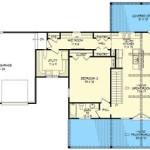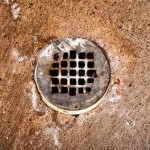Cost To Build Full Bathroom In Basement GTA Ontario
Building a full bathroom in a basement in the Greater Toronto Area (GTA) is a common home improvement project that can significantly increase property value and functionality. However, understanding the costs involved is crucial for effective budgeting and planning. The final price can vary substantially depending on numerous factors, including the bathroom size, the complexity of plumbing and electrical work, the quality of materials chosen, and whether professional contractors or DIY methods are employed. This document outlines the various elements influencing the overall cost of a basement bathroom in the GTA.
The GTA, encompassing cities like Toronto, Mississauga, Brampton, and Markham, presents a unique set of considerations regarding construction costs. Labour rates are generally higher compared to other regions in Ontario, and stricter building codes may necessitate more complex and expensive solutions, particularly regarding waterproofing and ventilation. Therefore, a thorough assessment of these factors is essential before embarking on the project.
Key Factors Influencing Basement Bathroom Costs
Several key factors directly impact the cost of building a basement bathroom in the GTA. Understanding these factors allows for a more accurate cost estimate and informed decision-making throughout the construction process.
One of the primary considerations is the existing plumbing infrastructure. If the basement already has readily accessible plumbing connections, the cost will be significantly lower. Connecting to existing drain lines and water supply pipes is far less expensive than installing new ones from scratch. However, if the basement floor needs to be broken to install new plumbing, the costs will increase dramatically. This is especially true if a sewage ejector pump is required to pump wastewater upwards to the main drain line, which is often the case in basements below the level of the municipal sewer system.
The selection of fixtures and finishes also plays a crucial role in determining the overall cost. Basic, builder-grade fixtures are significantly cheaper than high-end, designer options. Similarly, the choice of flooring, tiling, vanity, toilet, shower or bathtub, and lighting fixtures will directly impact the budget. Opting for more durable and water-resistant materials, particularly for flooring and tiling, is advisable in a basement environment, even if it means a higher initial cost, as it can prevent costly repairs in the future. The cost of labour for installing these fixtures also needs to be factored in. Expert installation is recommended, especially for plumbing and electrical components, to ensure compliance with building codes and prevent future problems.
Finally, compliance with building codes is paramount. Obtaining the necessary permits and ensuring adherence to all regulations is essential for a legal and safe bathroom installation. This might involve hiring a building inspector to assess the project at various stages and ensure compliance with local building codes related to ventilation, waterproofing, electrical safety, and plumbing. The cost of permits and inspections can vary depending on the municipality within the GTA and the complexity of the project. Neglecting to obtain the necessary permits can result in fines and the requirement to dismantle non-compliant installations, leading to significant financial losses.
Detailed Cost Breakdown: Essential Components
A comprehensive cost breakdown is crucial for budgeting a basement bathroom renovation accurately. This breakdown should encompass all essential components, from demolition to final finishing.
Demolition, if required, involves removing any existing structures or fixtures in the designated area. This might include removing drywall, flooring, or old plumbing fixtures. The cost of demolition depends on the extent of the work required and the disposal fees for the debris. It is advisable to factor in a contingency for unexpected issues uncovered during demolition, such as hidden mold or structural damage.
Plumbing is typically the most expensive aspect of a basement bathroom renovation. This includes running new water supply lines, installing drain pipes, and potentially installing a sewage ejector pump. The cost of plumbing will depend on the distance to the existing plumbing connections, the complexity of the layout, and the type of materials used. Copper piping is generally more expensive than PEX piping, but it is also more durable and resistant to corrosion. The installation of a sewage ejector pump can add several thousand dollars to the project cost, including the pump itself, the associated plumbing, and the electrical wiring.
Electrical work includes installing new wiring for lighting, ventilation, and any electrical outlets. This should be done by a licensed electrician to ensure compliance with electrical codes and safety standards. The cost of electrical work will depend on the number of fixtures and outlets being installed, the distance to the existing electrical panel, and any upgrades required to the electrical panel itself. Proper grounding and GFCI (Ground Fault Circuit Interrupter) protection are essential in a bathroom environment to prevent electrical shocks.
Framing and drywall are necessary to create the bathroom walls and ceiling. Framing involves building the wall structure using lumber, while drywall is used to cover the walls and create a smooth surface for painting or tiling. The cost of framing and drywall will depend on the size of the bathroom and the complexity of the design. Proper insulation should also be installed within the walls to improve energy efficiency and soundproofing.
Waterproofing is crucial in a basement environment to prevent moisture damage and mold growth. This includes applying a waterproof membrane to the walls and floor, especially in the shower or bathtub area. The cost of waterproofing will depend on the type of membrane used and the area being covered. It is advisable to use high-quality waterproofing materials and ensure proper installation to prevent future problems.
Flooring and tiling are essential for creating a durable and aesthetically pleasing bathroom. Common flooring options include ceramic tile, porcelain tile, vinyl flooring, and laminate flooring. Tile is a popular choice due to its water resistance and durability, but it is also more expensive than other options. The cost of flooring and tiling will depend on the type of material used, the size of the bathroom, and the complexity of the installation. Proper subfloor preparation is essential to ensure a level and stable surface for the flooring.
Fixtures and finishes include the toilet, sink, vanity, shower or bathtub, and lighting fixtures. The cost of these items can vary widely depending on the quality, style, and brand. Basic, builder-grade fixtures are generally the least expensive, while high-end, designer options can be significantly more expensive. It is advisable to choose fixtures that are durable, water-efficient, and aesthetically pleasing. The cost of installation for these fixtures should also be factored in.
Ventilation is essential to remove moisture and prevent mold growth in the bathroom. This typically involves installing an exhaust fan that vents to the outside. The cost of ventilation will depend on the size of the bathroom and the type of fan installed. Building codes typically require a minimum exhaust fan capacity based on the bathroom size.
Painting and finishing are the final steps in the bathroom renovation process. This includes painting the walls and ceiling, installing trim, and adding any decorative elements. The cost of painting and finishing will depend on the size of the bathroom and the type of paint used. It is advisable to use a mildew-resistant paint in a bathroom environment.
Cost-Saving Strategies and Budgeting Tips
While building a basement bathroom can be a significant investment, there are strategies to manage costs effectively and stay within budget. Careful planning, smart material choices, and strategic use of professional help can help minimize expenses without compromising quality.
Careful planning and design are essential for minimizing costs. A well-thought-out design can help optimize the layout and minimize the amount of plumbing and electrical work required. Consider the placement of fixtures carefully to avoid unnecessary expenses. For example, placing the new bathroom close to existing plumbing connections can significantly reduce the cost of running new pipes. Obtaining multiple quotes from different contractors can also help ensure a competitive price. Thoroughly reviewing the quotes and understanding the scope of work included is crucial for making an informed decision.
Choosing cost-effective materials can also help reduce the overall cost. Opting for builder-grade fixtures and less expensive flooring options can save money without sacrificing functionality. Consider using salvaged or repurposed materials where possible, such as reclaimed wood for shelving or a vintage vanity. However, it is important to ensure that all materials meet building code requirements and are appropriate for a bathroom environment. Investing in durable and water-resistant materials, even if they are slightly more expensive upfront, can prevent costly repairs in the future.
Strategic DIY can be a viable option for homeowners with some construction experience. Tasks such as painting, tiling, and installing basic fixtures can be done by the homeowner to save on labor costs. However, it is important to be realistic about one's skills and abilities and to avoid attempting tasks that require specialized knowledge or expertise, such as plumbing and electrical work. Hiring licensed professionals for these tasks is essential to ensure compliance with building codes and safety standards. Obtaining the necessary permits and inspections is also crucial, regardless of whether the work is done by a professional or a DIY enthusiast.
In summary, the cost of building a full bathroom in a basement in the GTA is a complex undertaking influenced by a multitude of factors. Understanding these factors and employing effective cost-saving strategies will allow homeowners to create a functional and valuable addition to their property while staying within their budget.

Basement Bathroom Renovation Cost In Toronto And The Gta Top Home General Contractor Gmc Construction Inc

Basement Bathroom Renovation Cost Toronto Reno Duck

Bathroom Renovation Cost In Toronto A Detailed Guide

Basement Renovation Cost In Toronto A Complete Guide 2025

Basement Finishing Costs In Toronto 2024 Complete Guide

Basement Bathroom Renovation Cost Toronto Reno Duck

Gta Basements Renovations Construction Company Kitchen Remodeling Bathroom Upgrades In Ontario

Bathroom Renovation Cost In Toronto A Complete Guide 2025

Basement Renovation Cost In Ontario Average Price To Finish A Renoduck

Basement Renovation Costs A Detailed Breakdown Csg
Related Posts

